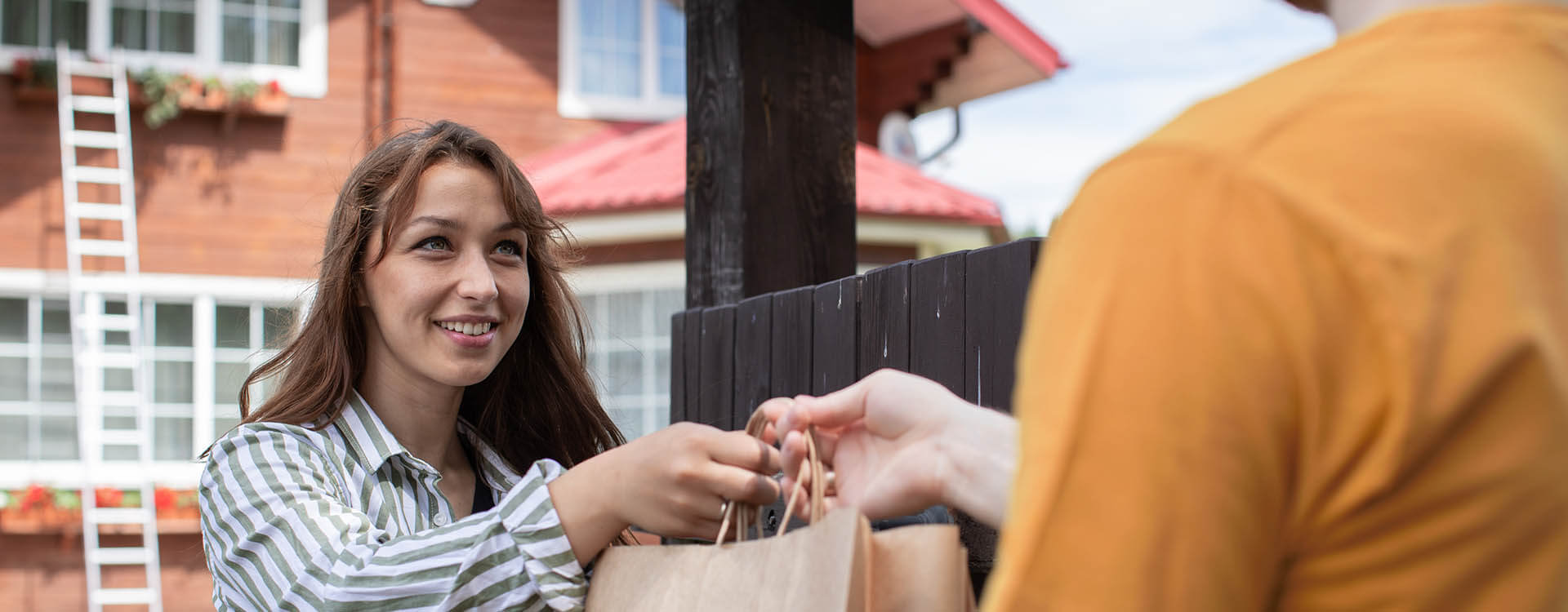Three Ways To Deepen Relationships Through Diner Data Collection
According to a recent UBS report, food delivery sales could rise annually more than 20% to $365 billion worldwide by 2030, from $35 billion. In addition, the same report states, “There could be a scenario where by 2030 most meals currently cooked at home are instead ordered online and delivered from either restaurants or central kitchens.” This is great news for restaurants that stand to benefit at the expense of grocery stores. However, when this happens, who owns the customer relationship – the food delivery service or the restaurant?
To answer this question, it is important to understand that there are generally two types of food delivery platforms out there. They are:
- The Restaurant-to-Consumer delivery segment includes the delivery of meals carried out directly by restaurants. The order may be made via platforms or directly through a restaurant website or app (e.g. Domino’s). The platforms collect the menus of independent restaurants and specialized delivery services. In other words, they merely lay the technical foundation for the searchability of restaurants and the processing of transactions. The restaurant usually takes care of the delivery process. However, in some cases, the platform can also handle the delivery.
- The Platform-to-Consumer delivery market segment focuses on online delivery services that provide customers with meals from partner restaurants that do not necessarily have to offer food delivery themselves. In this case, platforms such as Grubhub, DoorDash and UberEats handle the delivery process and the ordering process. Given the complexity of food delivery logistics, a majority of restaurants are opting to outsource delivery to third-party providers despite the significant cut to restaurant profits – up to 30 percent, according to Morgan Stanley.
When it comes to ‘owning the customer,’ the challenge occurs in the ‘Platform-to-Customer’ scenario. In this scenario, the food delivery platform owns the customer relationship end-to-end and understandably wants to retain ownership of that relationship to effectively market to and build loyalty with the customer. But considering the predicted growth in both scenarios, it is foolish for a restaurant to not embrace both. Wayback Burgers, for example, had relied exclusively on third-party delivery partners, but last year debuted a compact delivery vehicle to improve food quality and the customer experience.
How does a restaurant or restaurant group maximize its ability to collect data for food delivery customers? Here are three ways to deepen your diner relationships:
- Measurement. First and foremost, create the ability to measure customer data. Be able to answer basic food delivery questions, such as:
- How many food delivery orders are occurring at each of your restaurant locations?
- How long does it take from the moment the customer submits their order to the moment the customer gets their food? Furthermore, consider three other discrete sub-components:
- How long does it take the driver to get to the restaurant?
- How long does the driver wait at the restaurant?
- How long does it take for the driver to get to the customer?
- What sales are generated from these orders at each of your restaurant locations? Are there specific menu items that are performing better via food service than expected?
- Which of the above scenarios (Restaurant-to-Consumer or Platform-to-Consumer) is increasing more rapidly?
- How does weather impact food delivery?
- Engagement. Offer incentives to influence consumers to order directly from your restaurant online, versus ordering via a platform partner. A common way to do this is to implement a loyalty program in conjunction with online/app ordering. In addition, implementing online ordering is easier than ever (even for single-location restaurants) due to technology enablers such as Omnivore.io. Even if you are against the concept of a loyalty program, it’s easier than ever to test one out before deciding against it.
- Ask more from partners. Try to negotiate contracts with the ‘Platform-to-Consumer’ platforms to enable the sharing of customer data in a manner that is legal and by the applicable privacy policies. Hopefully, the food delivery platforms will develop APIs to allow restaurants to access this data, similar to what OpenTable has recently done with their cloud platform called GuestCenter.
Strategically, it is important to understand that ‘Restaurant-to-Consumer’ scenarios may offer a greater ability for the restaurant to own the customer relationship long-term. To demonstrate the impact of diner engagement, Wayback Burgers President Patrick Conlins shared his restaurant’s winning incentive strategy with QSR Magazine:
“Every day in May we offered a different deal to customers through the Wayback App,” says Conlin. “On National Hamburger Day any signature burger was only $3 for anyone who ordered using the App or who visited a Wayback Burgers location in person,” he adds. As a result, the brand saw a notable increase in year-over-year sales and App downloads. In May, Wayback Burgers saw an 8.3 percent increase in year-over-year sales and the number of App downloads increased by a remarkable 18 percent. “It was a home run for us,” says Conlin. “Our franchisees were very happy.”
Savvy restaurant operators are poised to dramatically increase their business in the next decade because of online ordering. Understanding your customer data strategy specific to the online ordering space will become increasingly important as this transformation in consumer behavior continues.
Watch a demo of ActiveDeliver™ now.
